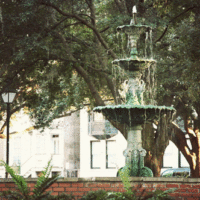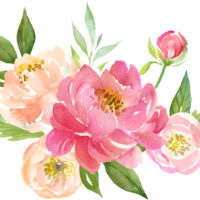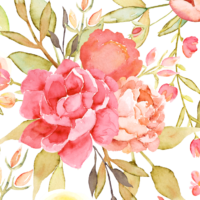Is announcing the length of the next commercial the new thing? I’ve seen on several channels now an announcement of exactly how many seconds are left until the show returns. I find it helpful, but also surprising. I never knew how much I could get done in 90 seconds – piss-pot stop, hand-washing, pouring a cup of tea, slicing an apple, and running upstairs to find a coat for work the next day – all in a single commercial break. The 30-second ones are slightly more limiting…
Author Archives: Alan Ilagan
March
2019
Tiny Threads: An Insignificant Series
Every letter matters, even the skinny ones.
Sending me a document wherein you leave out the ‘L’ in the word ‘public’ is problematic in a work setting.
March
2019
Savannah Approaching
Our trip to Savannah is quickly approaching (I just had our itinerary printed out on the cutest peach-blossom stationary) and so the day warrants a look back at my last visit to that magical city of the South. With its Spanish moss, beautifully-manicured squares, and historic ghosts, Savannah is a land of delicious enchantment. Like many people, I first succumbed to its siren call after reading John Berendt’s ‘Midnight in the Garden of Good and Evil’ – simply known as ‘The Book’ to locals. This was back in the 90’s, and Lady Chablis was still holding court at her club. Sadly, I never made it to one of her shows, and now she is no longer with us, but her legacy endures, and she has not been forgotten. As much as I enjoyed the novel, it was the city that ultimately captured my fancy, seducing with its charm and character, bending perception and experience with its beguiling ways. From the food and drink to the convivial atmosphere and friendly denizens, Savannah was like an eccentric old friend who welcomes one without outward judgment.
Last time around we booked our accommodations at the Mansion on Forsyth; this time we’ll be staying at the DeSoto Hotel, a little closer to the action. I’ve also booked dinners at The Grey and Elizabeth’s on 37th, because so much of Savannah’s allure is in its culinary sorcery. The libations on offer are pretty nifty too. This marks Andy’s first trip to Georgia, so I’m hoping it’s extra-special; Savannah can’t help but work her magic on the most winter-weary visitor.
March
2019
Crotch-Shot Homage to Madonna
The ‘Like A Prayer’ album wasn’t just brilliant for its music, but for its entire artfully-executed surroundings. Madonna has always been about image, and her hippie-inspired 60’s retro-chic outfitting for the ‘Like A Prayer’ era was a stunning collection of sounds, sights and even scents. (She had the original pressings incorporate patchouli into the packaging, lending the whole experience an incense-like spiritual vibe perfectly in keeping with the production at hand.)
I searched the world over (ok, the malls of upstate New York) to find that rope of beads so beautifully dangling from her open button-fly denims, all to no avail. Years later I eventually fashioned my own set so I could pay proper homage to this incredible album. I don’t quite have her killer abs, but I’ve amassed a solid collection of rings to at least evoke the mood. Sometimes an evocation – the merest echo of the original clarion – will have to suffice.
At least we have the music.

March
2019
Tiny Threads: An Insignificant Series
‘Like A Prayer’ has a Madonna Timeline entry for almost every single track. (We’ll get to ‘Love Song’ someday…) As we celebrate the album’s 30th anniversary, let’s look back.
- Like A Prayer
- Express Yourself
- Love Song
- Til Death Do Us Part
- Promise To Try
- Cherish
- Dear Jessie
- Oh Father
- Keep It Together
- Pray for Spanish Eyes
- Act of Contrition
Thanks to the powers that be.

March
2019
The Day Our Prayers Were Answered: ‘Like A Prayer’ Turns 30
Arguably her second greatest album (after ‘Ray of Light‘), ‘‘Like A Prayer‘ was released exactly thirty years ago on this date in 1989. I would rank it second based on its first two singles alone, but the remaining tracks are equally brilliant (give or take an eccentric Prince contribution and the often-problematic final track of a Madonna album).
In March of 1989, I was thirteen years old.
Tricky time of life, thirteen.
In some cultures that’s considered the point of life when your soul solidifies into what it’s going to be for life. For me, it was roughly the time of adult cognizance, the point at which I can start remembering most of what happens in a day rather than have it obscured by the murky half-remembrances of childhood (and the murky non-remembrances of the past decade, when memory stopped being made).
It was my last year at Wilbur H. Lynch Middle School ~ that quick two-year experience between elementary and high school ~ and as the winter neared its completion that year, we were all a little antsy. And bored. Raised on NBC’s daytime line-up, I hungered for drama and intrigue, for something more exciting than Social Studies or band. In the hallway outside the auditorium of the school, an expansive marble staircase wound its way up to the second floor. In mottled shades of gray, the marble was a glimpse of something beautiful in the midst of so much mediocrity. So too was Madonna’s new album in the pop landscape in 1989.
‘Like A Prayer’ shocked many, surprised some, and scared the hell out of me once the whispered beginnings and backward choir of ‘Act of Contrition’ kicked in. So entrenched in the Catholic dogma was I that one spring evening I found myself in the backyard holding a heavy stone over my head, about to smash it down on the cassette version of ‘Like A Prayer’ in an act of divine loyalty. It still wasn’t enough to keep ‘Like A Prayer’ from instantly searing itself into my memory bank. But I digress…
On those mornings, after I was dressed and about to depart for school, I’d sneak a peek at whatever was on MTV in my parents room. Dad had been at the hospital working for an hour already, while mom was downstairs waiting for my brother. Over their bed hung a large, graphic crucifix. The crown of thorns was slightly dusty. Cobwebs draped the arms of Jesus. His sorrowful expression, eyes closed in death or impending death, gave no hint or knowledge of any future resurrection. The blood pouring forth from his nailed hands must have made knowledge like that incredibly useless.
The dark early morning and the drawn shades meant that only the television was lighting the room. Flames of burning crosses lit up the crucifix and surrounding walls as Madonna danced to ‘Like A Prayer’ and I shuddered at whether this crossed the borderline into something blasphemous or sinful. Would God punish me for this? Would he punish my family? Guilt, loyalty, reverence and impudence crossed my mind and took up battle with one another. Religion clashed with nature clashed with spirituality clashed with gleeful demonic possession. A statue of a black saint bled ruby blood from his eyes while Madonna’s own palms were suddenly inflicted with stigmata ostensibly from a dropped knife. All the while, the music raged and the choir sang and the whole thing was so rapturous I thought I might die right there on the bed.


My mother’s voice breaks the reverie. My brother rushes by in the hall and thunders down the stairs. As the day goes by, I walk the hallways of school and think of Madonna’s song. Hearing it play in my mind, I envision the marble and the columns and the grandiosity of the school architecture rising to majestic heights and magnificence as if they were transforming into an iconic church. Echoes of children bounced off the stone, rose into the air, and collided with other voices. Angelic innocence smothered by devilish treachery. We were all just animals struggling to survive.
At such a young age ~ and yes, once upon a long time ago the age of thirteen was incredibly young and relatively innocent ~ I was not yet interested in girls. Little did I understand or even realize then, beyond a stirring I did my best to keep quiet and still, that I would never be interested in girls. Something like ‘Love Song’ was lost on entirely on me, as the stuff of crushes and infatuations would not come into play for several years. Of more immediate concern was the idea of parental abandonment and strife as portrayed in ‘Oh Father‘ and ‘Promise To Try‘ ~ on the cusp of adolescence, my issues with my parents were about to become as understandably strained as those of any young gay guy being raised in a strict, Catholic, half-Filipino household. I simply didn’t know it then, and was not ready to confront anyone or anything. Madonna sang for me, whether I realized it or not, and we began building an irrevocable bond that no one would ever fully understand.

Other songs sounded good, even if I didn’t have a clue about the pain that was being conveyed. I was happily light years away from understanding anything about ‘Til Death Do Us Part‘ ~ but the warning was implicit, not that there was any magic trick to avoiding falling in love. If there was, I’m sure I wouldn’t follow it. Most thirteen-year-olds won’t be bothered with such warnings, unless it’s to explicitly defy them. I wasn’t that difficult, yet, and so I listened from the safe vantage point of a bystander, enthralled and transfixed by the woman whose music always brought such exuberant joy and happiness. To that end, ‘Like A Prayer’ was distinctly different from the confections of ‘True Blue’ and ‘Like A Virgin‘ (even if there was ‘Cherish’).
Mostly this album was the start of a somber time. There was maybe one more year of carefree youth before things started to really change, before we took the irretrievable steps beyond childhood, when ‘Keep it Together‘ became the real prayer. The lament of ‘Pray for Spanish Eyes‘ and the lost enchantment of ‘Dear Jessie‘ hinted at darker days to come. The marble halls of my middle school days were already receding into memory, dissolving like some smoky sleight of hand, mere wisps of fragmented sounds and scents, faded evocations of a time that had no end and no beginning…

The ‘Like A Prayer’ album would be with me for the rest of my life, evolving and meaning different things to me as the years passed. I would come to understand all the songs that I could only feel the surface of back then, and the songs that I thought I knew so well would eventually reveal layers of meaning and a resonance that would continually inform my journey. (‘Express Yourself’ indeed.)
That’s the mark of a great music album.
It’s also the mark of a great musician.
Madonna proved herself with ‘Like A Prayer’ – and that was no mystery.
We no longer stood alone.

March
2019
Tiny Threads: An Insignificant Series
‘Spring is in the air’ is just another way of saying ‘Love is in the air.’
I’m not sorry that it is so.
March
2019
Spring Ascending
Rising like the big JC Himself, today heralds the return of spring! Amen and Halleluh!! (That’s the extent of my Drag Race references, and I know it was several seasons ago but I just can’t be bothered to keep up anymore.) Coming in the midst of Mercury’s Retrograde madness, spring has the onerous distinction of arriving while things are crazy and hectic. Only through deliberate determination to remain calm and not ruffle feathers have I maintained some semblance of sanity these past few weeks, and I’ll grant that it is the merest resemblance. Thankfully, it hasn’t been that difficult. Laying low is an art form, and I intend to make some serious art in the next few weeks.
My new project is practically completed – a month before I anticipated or hoped – which means I can begin planning a little promotional push for late spring/early summer. (Relax, it won’t be nearly as extensive or naked as the last one.) This is a smaller project – a little personal gift to those who mean the most to me. It’s also a completely new realm of work for me, so it’s amateurish and unpolished, but it was so fun to do I don’t care.
That’s the breath of fresh air that this spring, and this website, needs – so welcome to the new season. See the pretty flowers and smell their happy perfume. Pet the furry bunnies and hold the baby goats. Indulge in the moments before it all lets loose.
Spring is here!

March
2019
What God Sounds Like
MAYBE IT’S TIME TO LET THE OLD WAYS DIE
MAYBE IT’S TIME TO LET THE OLD WAYS DIE
IT TAKES A LOT TO CHANGE A MAN, HELL, IT TAKES A LOT TO TRY
MAYBE IT’S TIME TO LET THE OLD WAYS DIE
The best bits of beauty are the heartbreaking ones. They tear at the soul, ravage the calm, and rage against the peaceful sleep for which we may long. I think we need that sadness to fulfill the promise of happiness. One can’t exist without the other, not if we want to know what they really mean, how they really feel. The beauty of that is not always easy to grasp, or easy to see. One has to look hard to find solace in sadness.
NOBODY KNOWS WHAT WAITS FOR THE DEAD
NOBODY KNOWS WHAT WAITS FOR THE DEAD
SOME FOLKS JUST BELIEVE IN THE THINGS THEY’VE HEARD AND THE THINGS THEY READ
NOBODY KNOWS WHAT WAITS FOR THE DEAD
The solemnity of winter’s slumber is to be preserved cocoon-like until next December. Let this be an elegy for the passing of the dark season. I present to you a song with which to put your burdens down. We carry too much in a day, and we certainly carry too much in a winter. Let us take tonight to put this winter down, to honor and revere it for what it has been, and to gently welcome the next season whatever it may bring.
I’M GLAD I CAN’T GO BACK TO WHERE I CAME FROM
I’M GLAD THOSE DAYS ARE GONE, GONE FOR GOOD
BUT IF I COULD TAKE SPIRITS FROM MY PAST AND BRING ‘EM HERE
YOU KNOW I WOULD… KNOW I WOULD
Certain music always moves me at this time of the year. It’s the music of God, more-so than any choirs at Christmas or hymns at Easter – it’s a music that touches the soul, merging beauty and art and loss and nature in a glorious, rapturous and heartrending phantasmagoria. ‘Appalachian Spring’ and Aaron Copland created such a creature. Arvo Pärt made it too. They spoke the word of God.
NOBODY SPEAKS TO GOD THESE DAYS
NOBODY SPEAKS TO GOD THESE DAYS
I’D LIKE TO THINK HE’S LOOKIN’ DOWN AND LAUGHIN’ AT OUR WAYS
NOBODY SPEAKS TO GOD THESE DAYS
When winter transforms into spring it doesn’t always happen peacefully. It’s a battle of rage even when there’s only ever been one winner. Wind cries. Storm wails. Night tumbles. This is the sound of God? How could it hurt this much? How does one bear such terrifying beauty?
WHEN I WAS A CHILD, THEY TRIED TO FOOL ME
SAID THE WORLDLY MAN WAS LOST AND THAT HELL WAS REAL
WELL I’VE SEEN HELL IN RENO
AND THIS WORLD’S ONE BIG OLD CATHERINE WHEEL, SPINNIN’ STILL
As we turn the page to another spring, and bid farewell to another winter, the moment for pause and reflection is at hand. Then that too shall pass, and we will trudge on. It’s time.
MAYBE IT’S TIME TO LET THE OLD WAYS DIE
MAYBE IT’S TIME TO LET THE OLD WAYS DIE
IT TAKES A LOT TO CHANGE YOUR PLANS
AND A TRAIN TO CHANGE YOUR MIND
MAYBE IT’S TIME TO LET THE OLD WAYS DIE
OH, MAYBE IT’S TIME TO LET THE OLD WAYS DIE

“Get busy living, or get busy dying…â€
March
2019
March
2019
Adam Levine in His Birthday Suit
Celebrating his birthday today, Adam Levine gets another featured post on this site, after a long line of featured posts. He may be close to earning his own official Category here (like David Beckham, Ben Cohen, Madonna, and Tom Ford) – those behemoths whose posts are so numerous and substantial that they merit a rarefied categorization of sorts. Mr. Levine has done his share of naked romping here, so here’s an almost-complete capsulation of his previous appearances:
It began with this naked Adam Levine shot, with some lucky hands covering his naked crotch way back in 2012.
He shaved it all off – at least his chest hair – for those moves like Jagger, and in this shirtless Adam Levine post.

That first iconic naked shot was backed up with this yoga GIF that doubles as a sex GIF if you use your imagination.
A peek at Adam Levine’s underwear was glimpsed in this post. Briefs, baby, briefs!

More of Levine in his underwear, and in motion, could be seen here.
He performed this beautiful rendition of Prince’s ‘Purple Rain.’


His naked ass finally made its much-ballyhooed appearance in this post.
It turns out that a nude Adam Levine ass-shot is all one needs to court a certain following for an otherwise-simple recap.
Even when it’s not all about him, a shirtless post where he plays a supporting part is made more fine with Mr. Levine’s nipple-baring presence.
Case in point is this male fantasy collection in which a shirtless Adam Levine bends over.

Did I post this nude Adam Levine GIF series yet? It bears repeated viewings.
This post had some naked Adam Levine GIFs and that was more than enough.


When Maroon 5 were announced as the Super Bowl half-time show, I hinted at something shirtless not thinking it would ever happen. Well, it happened. Adam Levine took his shirt off and the place lit up.
Who knew a half-naked Adam Levine would ignite such a furor?


Anyway, Happy Birthday to the man at hand – and many happy returns of the day!

March
2019
Tiny Threads: An Insignificant Series
It always feels wrong to listen to ‘Manic Monday’ on any day other than Monday.
But every day is right to ‘Walk Like An Egyptian.’
[Cue the whistling part.]
Strike a pose on a Cadillac.
March
2019
A Mercurial Recap
Disruptive Mercury is once again in retrograde, where it shall remain for much of the month of March. Hold on to your hats and underwear as we try to ride this one out (unless you’re featured ginger Seth Fornea). If you’re still recovering from too much partying on St. Patrick’s Day, HA HA. I’m apoplectic, on with the recap…
The Bloodstone Bracelet: Not Another Nancy Drew Mystery or Harry Potter Prequel (I don’t care who Dumbledore fucked).
Go to any one of these posts, click on the “#TinyThreads” link at the bottom of each, and see how far back you can go. It’s like a little Fuck Your Own Adventure series.
Paint the town something.
It was Skip’s birthday, and it was grand.
One-two princes stand before you.
“It is such a secret place, the land of tears.“
The Madonna Timeline returned with a bang: this is ‘American Life.’
Hot-ass gingers for your St. Patrick’s Day viewing pleasure.
Hunks of the Day included such hotties as Takaya Honda, Jim Brickman, Jeremiah Lloyd Harmon, Kyle Cooke, and Graysen Quinn.
March
2019
Tiny Threads: An Insignificant Series
‘Be My Baby’ – used in more movie set-up montages than any other song in recent memory. Why oh why oh why oh why oh why oh why oh why… do fools fall in love with fools like you?
“We’ll make them turn their heads everywhere we go…â€
March
2019
A Hot Ginger Post for St. Patty’s Day
May the luck of the gingers be with you today! I’ve long since retired from celebrating this holiday with pub crawl, so this racy redhead post will have to provide all the excitement for the day. Personally, I think it’s much better than warm green beer.
We begin with one of our most recent ginger success stories: Jeremiah Lloyd Harmon, the ‘American Idol’ contestant who captured the hearts of the country with his sweet original composition.

Perennial ginger favorite Seth Fornea gets the featured photo placement, and this additional shot simply because he maintains his smoldering carrot-top (and carrot-midsection) flavor.

One of the greatest gingers ever to be featured here in nude glory was Greg Rutherford. See his naked ass here.


Broadway wonder Ricky Schroeder bared his beautiful bottom in this angelic post.


Actor and Twitter-phenom Daniel Newman made a dirty-ginger splash in this Hunk of the Day redux.
Witness the red-locked dreaminess of Race Imboden in this Olympic post.
Last year, Thomas Brady was Hunk of the Day on St. Patrick’s Day, and he is worth a re-look.
The year before that, Asger Skovgaard stuffed his gingerness into some briefs.
One hot-ass ginger.

Bringing ginger glory to RuPaul’s Pit Crew, Bryce Eilenberg burns up every post he’s in – see it all here.
Football ginger Jon Ryan brings hue and length to the sexy scene.
Red-blooded and red-headed Eddie Eduardo brings up his banging ginger rear to end this post. Happy St. Patrick’s Day (and apologies to the Saint who most likely didn’t deserve this).















